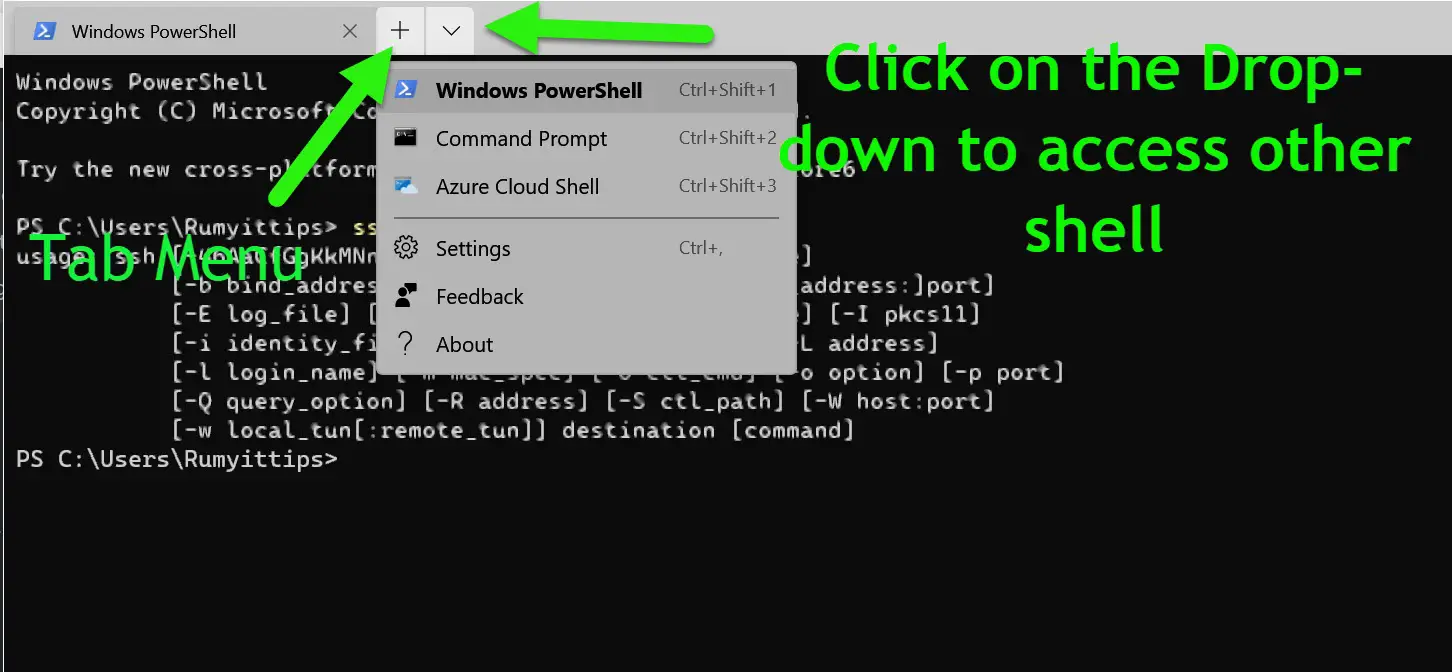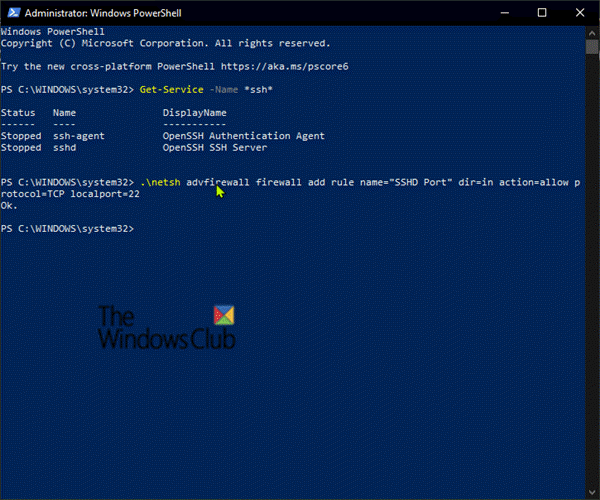

To configure OpenSSH on Windows, first make sure the OpenSSH server is installed by checking the system settings optional features.

For example, using any ssh client you could open a secure session with a Windows computer for the remote administration of that system. Microsoft includes the OpenSSH server which allows inbound remote ssh connections to your Windows computer. Once installed, you can open a regular windows command prompt and type the following to use OpenSSH to securely connect to a remote system:
#Ssh shell on windows 10 install
If you are running the latest version of Windows 10 you will find the OpenSSH Client already installed and you can click "add features" to install the OpenSSH server. To install it, simply type "optional features" in the search dialog and select "Manage Optional Features" under system settings. OpenSSH is provided as a Windows optional feature. The OpenSSH client is installed by default on the latest versions of Windows 10 and Windows Server versions 1709 and later and the OpenSSH server can be optionally installed as well. But in the 2017 Fall Creators Edition, Microsoft brought OpenSSH directly to Windows. These programs provide a nice graphical interface and make it easy to configure SSH’s authentication, encryption, and tunneling options.

In the past, Windows admins relied on third-party applications like the freely available PuTTY or VanDyke Software’s commercial SecureCRT program to make SSH remote connections. I have found the addition of the Windows Linux Subsystem a welcome addition to my toolkit and I find myself using it often. Even from within PowerShell, you can drop into Bash to leverage Bash developer tools from PowerShell.
#Ssh shell on windows 10 code
But WSL offers so much more than just an SSH client-for example, running the Bash interpreter, compiling C code natively using GNU Compiler Collection (GCC), or accessing traditional UNIX tools like grep, sed, and others. And, as it turns out with WSL, you nearly are. For example, you can open an Ubuntu terminal just as easily as a Windows command console and directly SSH into another system just as if you were running Linux natively. It feels like you have one system with additional capabilities, and it feels much different than running a Linux virtual machine in parallel to your Windows workstation. For example, the home directory in your WSL Ubuntu install is the same as your Windows home directory.
#Ssh shell on windows 10 full
WSL lets you install a full Linux distribution alongside your Windows installation, interoperates directly with your Windows hardware and filesystem. These new features ensure you can use your Windows client computers to manage your infrastructure regardless of platform or location. In the Windows 10 Fall Creators Update, Microsoft added the Windows Subsystem for Linux (WSL) and optional features to support both the OpenSSH client and server. More recently, Microsoft broadened its support of Linux and other open-source standards. Microsoft began to recognize the advantages scripting and automation brought to systems administration and introduced new systems administration models and frameworks like headless servers that did not run the Windows GUI and PowerShell that provided a robust systems administration programming toolkit. Both environments enabled administrators to run Unix-compiled programs on Windows, but support was limited.

There were a few efforts that enabled Linux admins to work with their native systems and programs using Windows workstations with various emulators and interpreters, such as, Microsoft Services for Unix (SFU) and Cygwin. Microsoft traditionally depended on a rich graphical user interface for the administration of their Windows OS and shunned support of other operating systems like Linux. SSH offers critical authentication and encryption services for remote systems management, and this tooling will continue to play an important role in managing devices of all makes and models. Linux administrators have relied on SSH for decades for systems management and there is no sign that this will change. The SSH client is built into most (if not all) Linux distributions and is now also included in Microsoft Windows. Use SSH for remote, interactive command-line access, file transfer, and to even encapsulate other network protocols between systems. The Secure Shell (SSH) protocol provides several very useful and important tools for the remote administration of your devices and hosts.


 0 kommentar(er)
0 kommentar(er)
